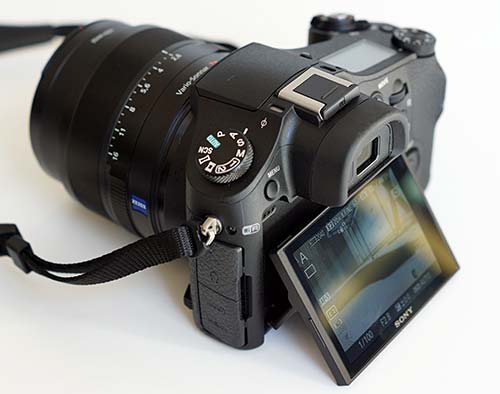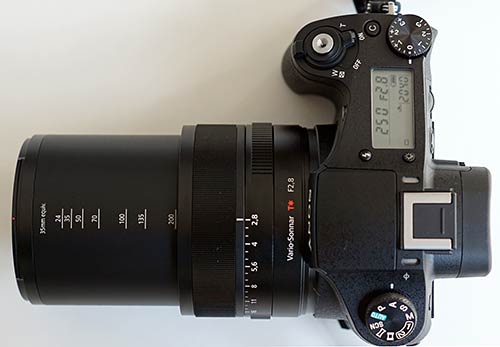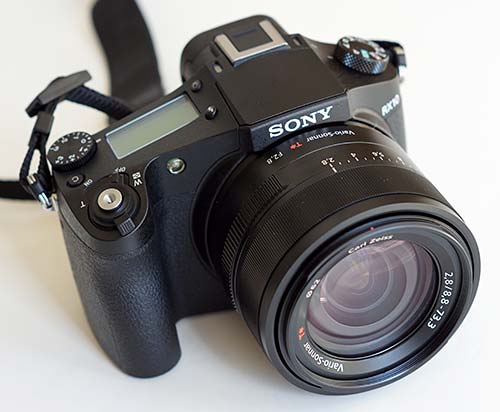Sony has done some amazing things with digital cameras in the past five years, from the groundbreaking Sony NEX-5 mirrorless ILC (interchangeable lens camera) that was barely bigger than a point and shoot, to the tiny RX100 and RX100 II point and shoots that take photos nearly as good as an entry to mid-level consumer sDSLR. Today we look at another novel Sony digital camera, the Cyber-shot DSC-RX10. You could call this a bridge camera, but it’s more than that. It looks and works like a compact DSLR but the lens is fixed (you can’t remove it). But unlike most bridge cameras, you’re not compromising on processing power, manual controls and pro-oriented ports like 3.5mm stereo mic and headphone jacks and an uncompressed HDMI port that can stream lossless content to a computer or video recorder. It’s the everything camera, that can handle photos and full HD video recording equally well. With a long, fast zoom, it can cover most situations.
The RX10 weighs 1.75 lbs. so it’s no lightweight. It has a magnesium alloy body with a leather-style covering and it’s weather and dust resistant. It looks and feels like a quality camera and it’s large enough to provide a good grip and set of controls. The camera has a bright 3″ articulating LCD (up and down, but not sideways) and a wonderful XGA electronic viewfinder (EVF) as well as the usual monochrome LCD up top for basic status info. There’s a built-in flash and Sony’s multi-interface shoe for flashes and external microphones (you can use the 3.5mm mic port to keep the hot shoe available for external flashes).

So what makes the Sony RX10 so impressive? For those who want SLR-like handling and quality, but don’t want to buy a bevvy of heavy and expensive lenses, the $1,299 RX10 is hard to beat. Why? It has a very fast long zoom lens with an impressive constant f/2.8 aperture. That sort of lens for a DSLR will cost nearly as much as the RX10 itself. The f/2.8 Carl Zeiss Vario-Sonnar T* 24-200mm (35mm equivalent) does the job of several lenses in terms of zoom range and it’s much faster (wider aperture) than the horrid kit lenses included with many otherwise respectable cameras. It’s also equally good at shooting full HD video with many design nods towards video shooting, including 1080 at 24p/60i/60p in AVCHD format, a zoom trigger on the body that activates the smooth motorized zoom, 3.5mm mic jack, zebras for over-exposure indication, full real time manual control over recording and the new BIONZ X processor (also used in the Alpha A7 and A7R) that samples the full sensor when recording video. We used the RX10 to shoot the intro for our video review below, and you’ll notice the intro is sharper with less motion blur and artifacting compared to our fairly high end Canon camcorder that we used to shoot the outro.

The Sony RX10 uses the same 1″ 20.2MP Exmor R sensor with BSI as the RX100 and RX100 II. That’s much larger than a point and shoot sensor, but significantly smaller than a consumer DSLR’s APS-C sensor. The RX10 makes up for the smaller sensor with backside illumination for improved low light shooting and the fast lens that gets more light to the sensor than the average SLR zoom. Will it beat a good DSLR with a very fast f/1.8 or f/1.4 prime or zoom lens? No. But it can come surprisingly close.
Here’s our Sony RX10 video review. Our full written review will follow.
[embedded content]
–
——————–
Lisa Gade
Editor in Chief, MobileTechReview